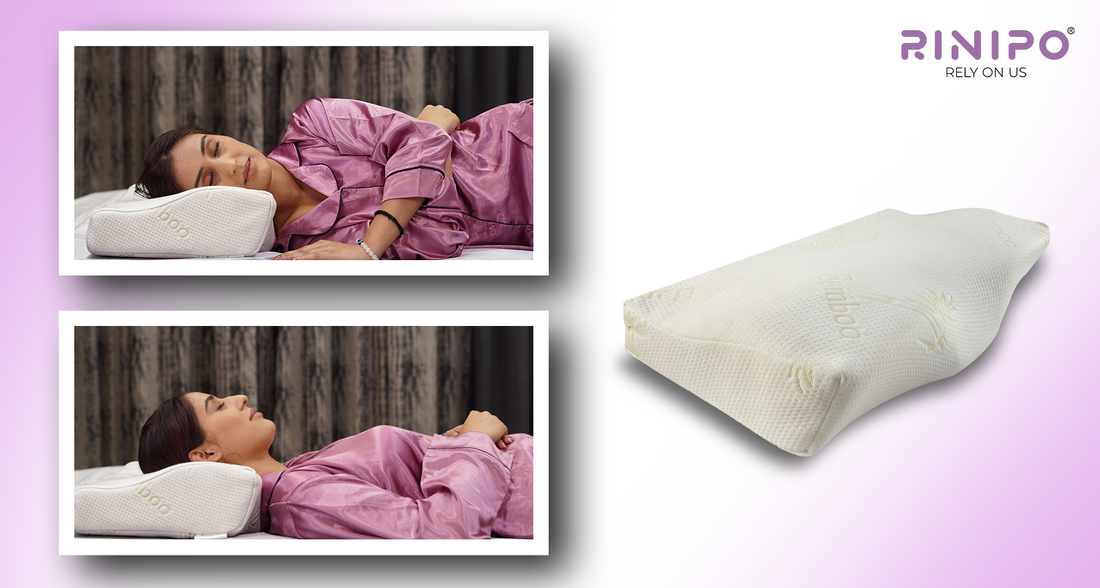
Cervical Pillows: The Panacea for Neck and Shoulder Pain
Share
Neck and shoulder ache have joined ranks to be some of the most prevalent health issues in this day and age. Long working hours, negative posture, stress, and poor sleep postures all culminate to cause distress
that could interfere with both quality and productivity of life. Though medication and therapy could promise relief in the short term, the true solution tends to come from correcting daily habits—beginning with something to be to be the pillow one lies on. This is where cervical pillows come in to play a revolutionary role.
Understanding the Cervical Pillow
A cervical pillow, known to be an orthopaedic or contour pillow, is specially designed to support the natural curve of the cervical spine—the place that runs through your neck. In contrast to pillows that are flat and soft, cervical pillows feature an ergonomic shape, often with a gentle curve or greater edges. This design helps keep the neck, shoulders, and spine in proper alignment while you sleep.
By supporting the head and closing the gap between the shoulders and neck, a cervical pillow keeps your body in its neutral position. This minimizes muscle tension, avoids stiffness, and enhances deeper, more rejuvenating sleep.
How Cervical Pillows Relieve Pain

Correct Spine Alignment
Misalignment is one of the largest contributors to neck and shoulder distress
.A cervical pillow keeps your head from tilting too far forward, backward, or sideward when sleeping. By keeping the cervical spine in alignment, it reduces unnecessary strain on muscles and ligaments.
Relief from Muscle Tension
A regular pillow pushes the neck into unnatural positions, making the muscles strain to hold up the head. Cervical pillows, on the other hand, evenly distribute pressure and allow the muscles to relax, generating less tension and aching.
Enhanced Blood Flow
Bad sleeping posture can restrict the flow of blood, which causes numbness or tingly feelings in the shoulders and arms. Cervical pillows ensure good Blood flow through the removal of benefits pressure and alignment of the head at the Handy angle.
Support for Different Sleeping Postures

No matter if you sleep on your back, side, or sometimes stomach, cervical pillows are flexible. For back sleepers, they cradle the neck curve; side sleepers, they fill the space between the head and shoulder; and stomach sleepers, low-profile models ease tension in the neck.
Advantages Beyond Pain Relief
Although the primary goal of cervical pillows is to relieve neck and shoulder pain, their benefits go much further:
Improved Sleep Quality: With proper spinal alignment, you’re less prone to throw and turn, allowing for intact, revitalizing sleep.
Reduced Risk of Snoring: By keeping airways more open, cervical pillows can reduce snoring in Some people.
Posture Correction: Over time, using a cervical pillow can improve posture, both while sleeping & all through the day.
Fewer Headaches: Tension headaches resulting from uncomfortable sleeping positions can be reduced with the regular use of a cervical pillow.
The Right Cervical Pillow

All cervical pillows are not the same, and getting the right one is important to gain the benefits. These are important factors to look into:
Material
Memory Foam: Provides contour support and Molds to your shape.
Latex: Offers stiffer support and is naturally hypoallergenic.
Fiberfil: Softer and cheaper, but not to be long-lasting.
Loft and Firmness
The perfect pillow Loft, or elevation, which fluctuates. with sleeping position. Side Sleepers need a larger loft. sleepers are comfortable with medium, and stomach Sleepers need a low profile.
Shape and Design
Cervical pillows have contour shapes, butterfly shapes, and traditional rectangle designs with supplementary neck support. One should choose either based on comfort and the gravity of your pain.
Breathability and Hygiene
Search for pillows that have breathable casings and hypoallergenic materials to provide a clean and comfortable sleeping surface.
Who Should Use a Cervical Pillow?

Cervical pillows are helpful for anyone, but especially for:
People who have long-term neck and shoulder pain.
Office workers or those living a sedentary lifestyle and working many hours at the computer screen.
Those with neck injury recovery or surgery (with medical advice).
Side and back sleepers in need of better posture and relaxation.
Those suffering from recurring tension headaches or morning stiffness.
Tips for Getting the Most Out of It
Provide your body a little break time; it can take a few nights to acclimate to the contour shape.
Use the pillow with a supportive mattress to keep the spine overall aligned.
Practice good daytime posture—no pillow is going to be able to completely reverse the harm of hours at a time spent slouching at a desk.
Replace your pillow every 18-24 months based on material and use.
Cervical pillows are more than a sleeping accessory—they're an investment in long-term health and comfort. By curing the source of neck and shoulder pain through proper alignment and support, they can revolutionize sleep quality, decrease, and increase overall well-being.
If you tend to awaken with stiffness or pain, it may be time to change your pillow. Making the switch to a cervical pillow may be the easiest but most effective way to getting mornings free of pain and better posture.
